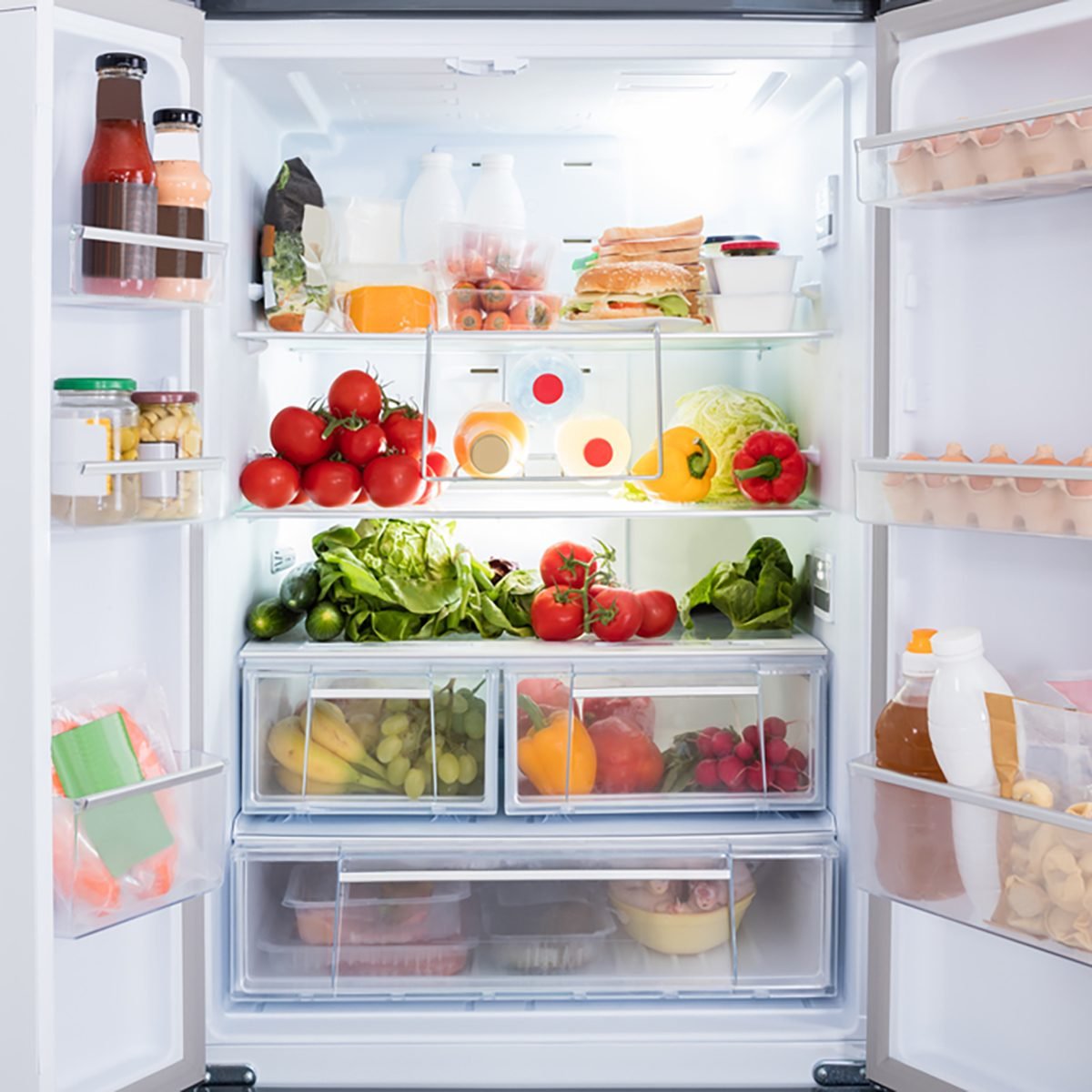
Use Containers
Containers are your friend when it comes to fridge organization. Group like items together and create zones for your containers. Use airtight containers to store leftovers and cut-up fruit or veggies. Fridge bins with handles (from $20) are great for snacks, condiments and anything else that you access daily. A variety of containers keep your fridge clean and make it easy to see what you need to pick up on your next grocery run. Get the rest of your house in order with these smart storage containers.

Create Labels with a Chalk Marker
Once you’ve organized your food into containers, label them! Instead of stick-on labels that can peel off or get stained with food, try using a chalk marker ($25 for 4). Chalk markers write smoothly on plastic and wipe right off with water, which is perfect for fridge containers that might get used for different items depending on your needs. Labels not only help identify what’s in each container, but they also can be used for expiration dates and to help everyone in the family know where items belong. Psst! Here’s how long your milk really lasts.

Don’t Overfill
After a grocery run, there’s great satisfaction in gazing at your full refrigerator loaded up with all your favorite items. Just be sure not to stuff it with too much food. An overfilled refrigerator can restrict air flow, making it harder to keep things cool, which reduces energy efficiency and can put a strain on the refrigerator motor. (Is your fridge’s capacity less than you think?)

Use a Lazy Susan for Easy Access
You may have a lazy Susan ($15) in your pantry or cabinet, but putting one in the fridge is a game changer! No more constantly shuffling items around, searching for something in the back. Use it for things that won’t topple over easily like salad dressings, sauces or jams and jellies. You’ll wonder why you haven’t been using one all along!

Be Mindful of What You Store in the Door
Some food items shouldn’t be stored in the refrigerator door. With it constantly being opened and closed, the temperature in the door is not always consistent. So play it safe and keep things that easily spoil, including eggs, inside the fridge on a shelf.

Keep Fruits and Vegetables Separate
Give your fruits and veggies a longer life by keeping them separate. Some fruits give off high levels of a ripening agent called ethylene which can spoil surrounding vegetables. If you store any of your produce in bags, be sure there are holes to allow air flow. Learn about more produce mistakes you didn’t know you were making.

Use Shelf Liners
Shelf liners can protect your shelves from spills and help combat bacteria and odors. This set of refrigerator mats ($10) has great reviews. We love that they’re wipeable, you can cut them to size and they’re cushioned so they’re gentle on fruits and veggies.

Store Meat at the Bottom
Ever wonder what’s the best fridge location for your meat? Store it on the bottom shelf of the fridge. This prevents any dripping juices from contaminating your other foods. This is especially important when thawing meat in the refrigerator where runaway juices are more likely. Always place thawing meat on a plate or in a container. Here’s how long meat lasts in the fridge.

Do a Weekly Clean-Out
The number-one secret to keeping your fridge organized? Clean it out. Get in the habit of a weekly clean-out session before your grocery run. Throw away anything that is expired and wipe down the shelves and drawers. Because let’s face it: All your organization methods are for nothing if your fridge is full of old food and empty containers. Next, learn how to organize your freezer!
The post 9 Ways You’re Not Organizing Your Fridge—Yet appeared first on Taste of Home.
Erica Young